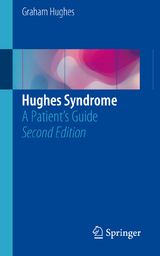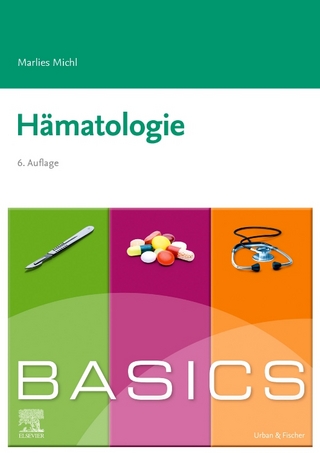
Hughes Syndrome
A Patient's Guide
Seiten
2001
|
8th 2001 ed.
Springer London Ltd (Verlag)
978-1-85233-457-4 (ISBN)
Springer London Ltd (Verlag)
978-1-85233-457-4 (ISBN)
- Titel erscheint in neuer Auflage
- Artikel merken
Zu diesem Artikel existiert eine Nachauflage
The tendency for the blood to clot excessively has the potential to cut off the oxygen supply to any organ of the body. In 1983, Dr Graham Hughes and his team in London described a syndrome, and subsequently developed simple blood tests to diagnose the condition. This book provides a description of the syndrome for patients.
As with any delicate machine, the human body can be profoundly affected by its supply of vital running materials. Thus, the tendency for the blood to clot excessively has the potential to cut off the oxygen supply to any organ of the body. In 1983, Dr Graham Hughes and his team in London described a syndrome and subsequently developed simple blood tests to diagnose the condition. This syndrome is characterised by thrombosis (both in limbs and internal organs), headaches, memory loss, strokes and, in pregnant women, placental clotting and recurrent miscarriage. The syndrome, now known worldwide as Hughes Syndrome, or the anti-phospholipid syndrome, is common - being responsible for example, for up to 1 in 5 cases of young stroke. More important, it is treatable. This book provides the first in-depth description of the syndrome for patients.
As with any delicate machine, the human body can be profoundly affected by its supply of vital running materials. Thus, the tendency for the blood to clot excessively has the potential to cut off the oxygen supply to any organ of the body. In 1983, Dr Graham Hughes and his team in London described a syndrome and subsequently developed simple blood tests to diagnose the condition. This syndrome is characterised by thrombosis (both in limbs and internal organs), headaches, memory loss, strokes and, in pregnant women, placental clotting and recurrent miscarriage. The syndrome, now known worldwide as Hughes Syndrome, or the anti-phospholipid syndrome, is common - being responsible for example, for up to 1 in 5 cases of young stroke. More important, it is treatable. This book provides the first in-depth description of the syndrome for patients.
1.Sticky Blood: the Disease Is Common.- 2.Main Clinical Features.- 3.Clotting in Veins.- 4.Stroke.- 5.Memory Loss and "Alzheimers".- 6.Headaches, Migraine and Fits.- 7.The Spinal Cord and "Multiple Sclerosis".- 8.The Heart and Arteries.- 9.Internal Organs.- 10.The "Catastrophic" Antiphospholipid Syndrome.- 11.Pregnancy and Fetal Loss.- 12.Hughes' Syndrome and Lupus.- 13.Treatment.- 14.The Outlook.- 15.What Blood Tests Do We Use?.- 16.Research.- 17.Background.- 18.Further Reading and Websites.
| Erscheint lt. Verlag | 2.4.2001 |
|---|---|
| Zusatzinfo | 14 black & white illustrations, biography |
| Verlagsort | England |
| Sprache | englisch |
| Maße | 133 x 205 mm |
| Gewicht | 103 g |
| Themenwelt | Medizin / Pharmazie ► Medizinische Fachgebiete ► Dermatologie |
| Medizinische Fachgebiete ► Innere Medizin ► Hämatologie | |
| ISBN-10 | 1-85233-457-6 / 1852334576 |
| ISBN-13 | 978-1-85233-457-4 / 9781852334574 |
| Zustand | Neuware |
| Informationen gemäß Produktsicherheitsverordnung (GPSR) | |
| Haben Sie eine Frage zum Produkt? |
Mehr entdecken
aus dem Bereich
aus dem Bereich
Buch | Softcover (2024)
Urban & Fischer in Elsevier (Verlag)
54,00 €
Buch | Softcover (2023)
Deutscher Ärzteverlag
29,99 €



